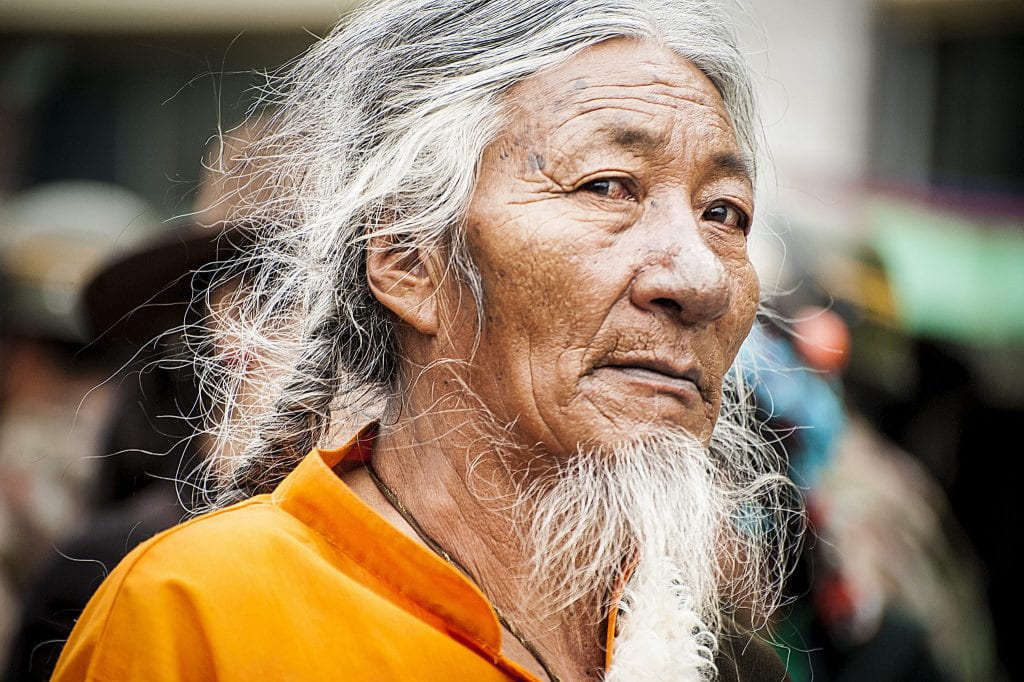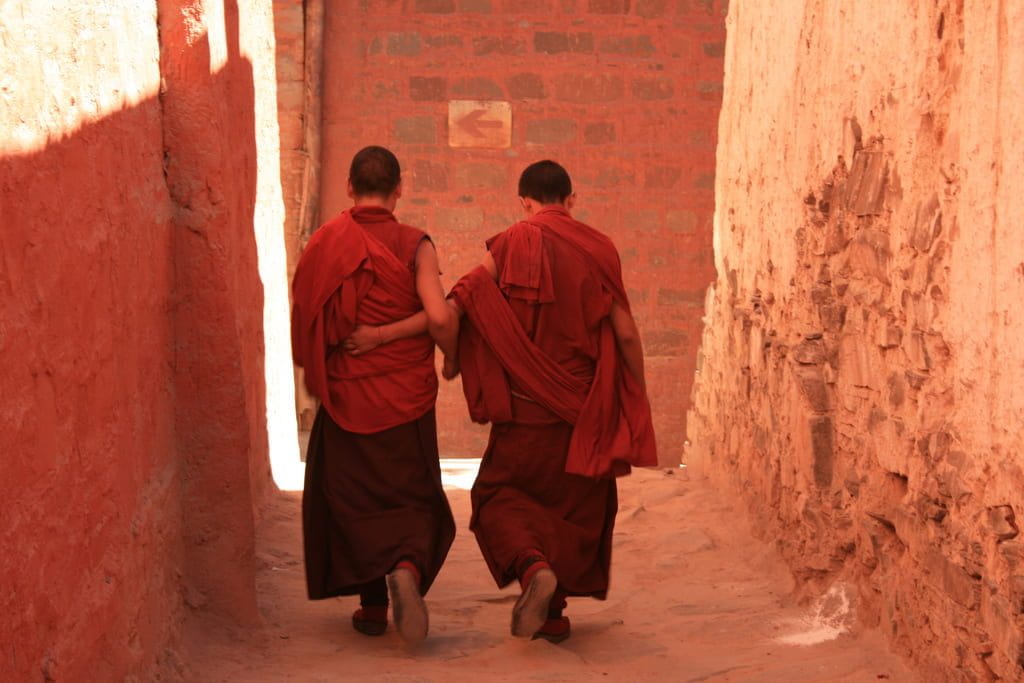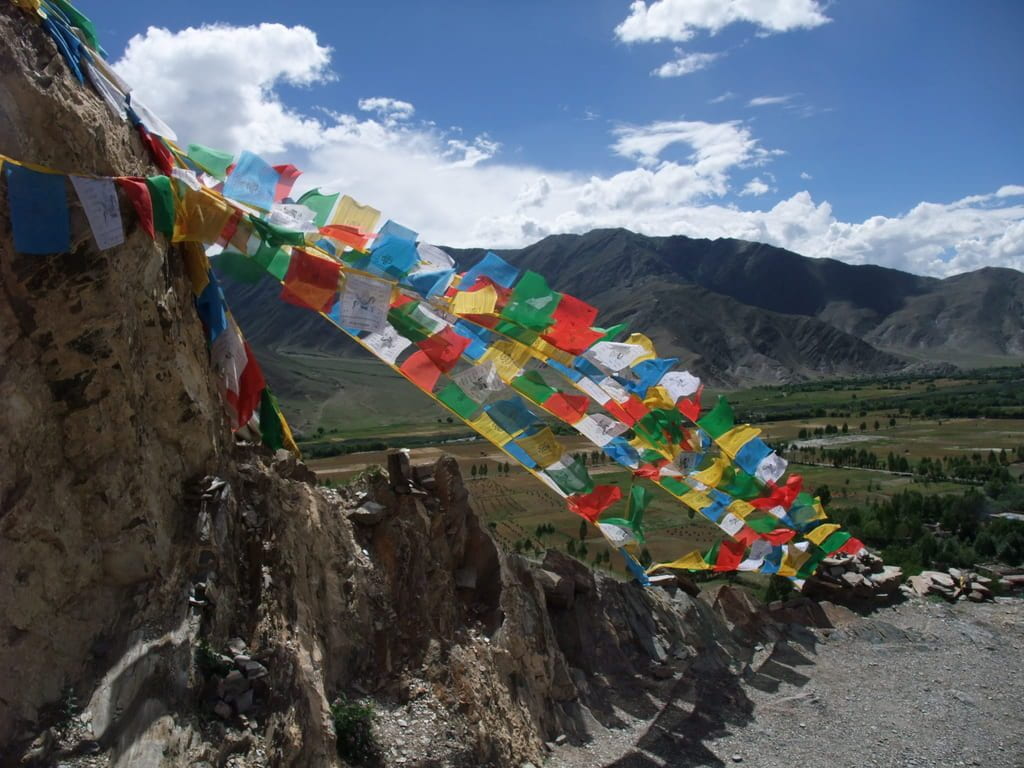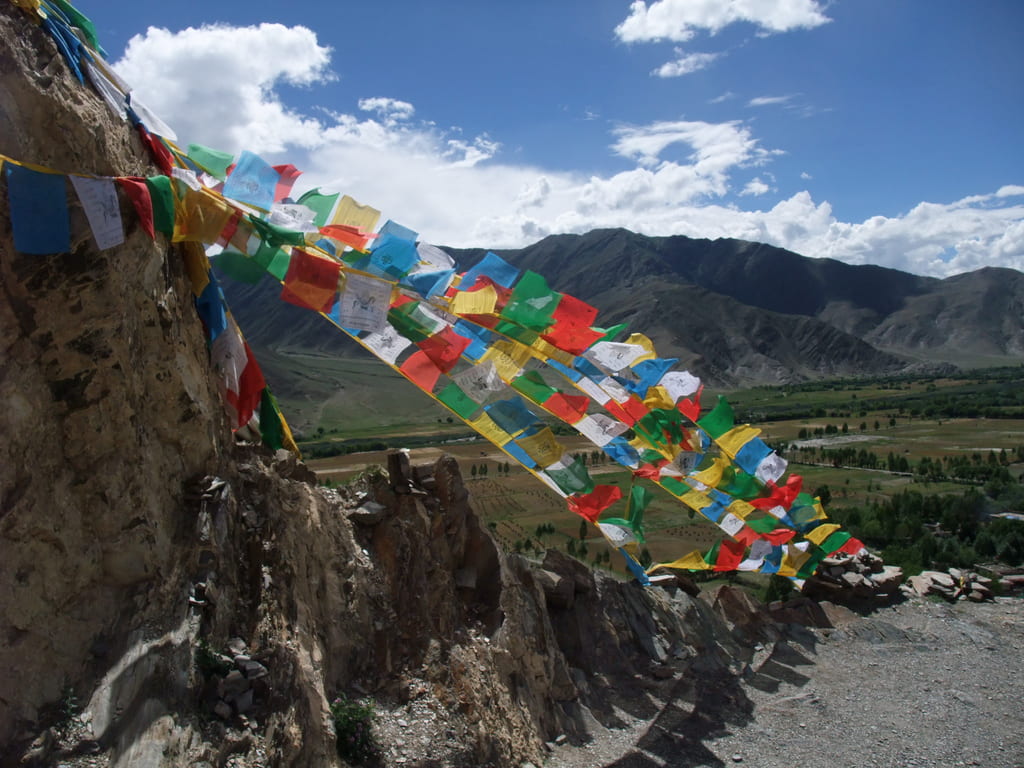The nation and people of Tibet are hardly on anyone’s radar during most of the year because the atrocities here remain overshadowed by the happenings in other places like Syria or Sudan. Ven. Geshe Lhakdor, translator to His Holiness the Dalai Lama and directory of the library of Tibetan Works and Archives, lectured here last Tuesday. Using the Compassion in Exile DVD as the basis for this blog, I will shed light on the plight of Tibetans.

The People’s Republic of China (PRC) has systematically eradicated the people of Tibet since 1950. The invasion of Tibet by the PRC army, under the guise of liberation, took place in 1950 because of its natural resources, wealth, and geopolitical high ground; an invasion meant the doubling the land mass for the Chinese empire. Sixteen year-old Tenzin Gyatso assumed leadership responsibility of the Tibetan people, culture, and traditions as the 14th Dalai Lama. For eight years, he attempted to protect the Tibetan identity. However, in 1959, the intimidation tactics and brute force of the Chinese, overtake the land and push the Tibetans–known for their peaceful and gentle nature–to flee to India.
His Holiness the 14th Dalai Lama is the spiritual leader and head of state of the Tibetan people. He is also a refugee. Living in exile in Dharamsala, India with millions of Tibetans desirous of the maintenance and preservation of their identity, he is the source of their hope. The flood of refugees continues into India where the people can practice religion, maintain culture, and glean from their cherished leader. A faithful followers says, “When His Holiness fled to India, it was as if the sun went down in Tibet… we were living in darkness.” His manner is one of humble laughter. His thoughts are on the consciousness; many believe he is the incarnation of compassion. He is a man seeking to fix thing. Tendzin Choegual, his younger brother, claims, “His Holiness has moral power, which the world used to have before but, right now it is overshadowed by political power. And whatever he does it is based on goodness of maximum number of human beings; so it’s based on altruism.” Michael C. Davis assigns peaceful resistors as a characteristic of the people and government. Tibetans, following the example of His Holiness, are nonviolent and compassionate people despite their oppressive struggle. He asserts the notion that many indigenous cultures, particularly Tibet, sustain periods of repression, resistance, and resilience as they pursue identity.
The PRC signed the UN Declaration on the Rights of Indigenous People (DRIPS) in 2007. Articles 1-3 of DRIPS guarantees autonomy, self-determination, and the right to enjoy all human and fundamental freedoms. Tibet has a government in exile. An exiled government possesses the power of governing and leading, but has no authority to legitimacy because there is no territory over which to govern. For more than 50 years, His Holiness the Dalai Lama symbolizes resistance to an authoritarian regime. This nonviolent protest spawned a “conspiracy of silence” that generated rejection of His Holiness the Dalai Lama as a political leader, for more than 30 years. The conspiracy of silence–fear of Chinese government backlash if/when recognizing the people, traditions, and culture of Tibetans—created a vacuum of turning a complicit blind-eye, allowing China to continue the human rights atrocities against the Tibetans. “Our only hope is to rely on the outside world, and people from free countries”, the Dalai Lama revealed.
US Foreign Policy has participated in the conspiracy of silence, yet a change seemed to arrive in the early 90s. During a 1991 visit to US Congress, the Dalai Lama pronounced, “Here I enjoy the freedom of speech, the freedom of thought, and the freedom of movement. When I was about 15, I lost that freedom”; freedoms identified within the Universal Declaration of Human Rights because they are universal, inalienable, and indivisible. Kent Wiedemann of US State Department Head of the China desk, stated, “Official US policy has consistently regarded Tibet as a part of China, although an autonomous region within China. We have no evidence at this point that the Chinese government is engaged in any policies or any actions aimed at wiping out the Tibetans, or in short, reflecting a policy of genocide, either against the Tibetan people themselves or against their culture.” When asked about self-determination for the Tibetan people, he stared blankly at the camera before smiling without an answer. No country possesses a policy of genocide. Genocide, as noted in Article 2 of the Convention on the Prevention and Punishment of the Crime of Genocide, is the deliberate killing of a large group of people, especially those of a particular ethnic group or nation. When reflecting on genocide, most people know of and point to Rwanda, Cambodia, and the Holocaust. The filmmakers attribute genocide to the behaviors of the Chinese towards the Tibetans, while the international community has not. Ellen Bork, in her 2012 article, “Will Washington Take a Stand”, questions Washington’s commitment to the plight of the Tibetans because of its relationship with China. She argues that the past is a representation of the future when it comes to the US’ failure to champion Tibet against China.

Rhoda Howard-Hassmann stresses there are three key contributing elements in the complex subject of human rights: criticism within the field, identity politics and their expression, and the volatile nature of violations as a precursor to genocide. First, criticism is located, specifically, in the habit of denying the universality, indivisibility, and interdependent nature of human rights. Second, identity politics, particularly in terms of a Western versus non-Western dichotomy, utilizes time as the unseen factor to frame the past, the present, and the future. Lastly, genocide is a byproduct of the symptomatic human rights violations, compounded by criticism and inadequate remembrance of time. The combination of these components permits the complication of Western and non-Western human rights discourse to fail in recognizing rights as universal. This failure, she contends, leads to habitual and unaccountable violations, that if unchecked, have the potential to manifest in genocide.
“Each time I talk of what I saw in Tibet, I have to be in tears.” – Jetsun Pema, the younger sister of His Holiness the Dalai Lama
Human rights violations began following the Dalai Lama’s visit with Chairman Mao Tse-tung in China, first in the form of religious prosecution. At 19, His Holiness argued for the fate of Tibet. Mao believed religion was poison and damage for the country, plaguing the population and potential material development. The Chinese sought to destroy religion through the destruction of monasteries, which were also schools and universities, libraries and hospitals. The goal was to abolish the depths of understanding that comes from training the mind. His Holiness affirms that Tibetan Buddhism is not simply about the religious aspect but the technique of training and settling the body and mind, as a method and tenet that can benefit humanity. One believer cries, “Although the Chinese say there is freedom of religion, they don’t allow us to practice our faith.” The practice of Tibetan Buddhism is safe outside of Tibet.
In the film, His Holiness cites two things–immeasurable human rights violations in the form of torture, beatings, and killings, and population transfer in the form of birth control—as most pressing for Tibetans. Imprisonment and torture is the judgment for Tibetans expressing a strong cultural identity. Rape is a weapon of intimidation against Tibetan women and girls, and sterilization as a means of forced birth control, including on women pregnant in their final trimester. Additionally, due to the decimation of monasteries, Tibetans parents, living in under occupation, often send their children over the Himalayas into India in order to have a chance at living in freedom and gaining an education. In an effort to continue cultural identity with a modern understanding of the world, school lectures consist of music, drama and philosophy, in addition to the rituals and religious ideals of Buddhism. It is a similar education path to His Holiness, who achieved his degree while leading a nation under occupation.

Fang Lizhi in a 1991 speech remarked that Tibetan culture continues to survive because of the resilience of the people, and a mutual respect “between fair-minded people” on a personal level, though not on a political one. “Even though many Tibetans see the Hans as being responsible for the destruction of Tibetan culture and religion, mutual respect is still strong on a personal level… we all want democracy. We both need democracy and human right if we are to find a way to live together peacefully, but something more is needed.” He continues by explaining the positives and negatives of nationalism, stating that commonality is located in a true comprehension of nationalism. Negative nationalism is suppressive, extremist, and leads to distrust and hatred, while positive nationalism is cohesive, cooperative, and leads to dialogue.
To Davis, the window for dialogue is closing on the Chinese. In March 2008, Tibetan demonstrators and rioters “offered a middle way” in the form of Tibetan Memorandum that sought negotiation for the restoration of independence and autonomy. An uninterested China refused to come to the table, arguing, “Tibet has always been an inseparable part of China”. Bork points out self-immolations have brought attention to the plight of Tibetans, providing a measure of symbolic and unwavering commitment to the restoration of Tibet. “China’s policies have provoked rather than crushed Tibetan resistance”, she proclaims.
Masahide Tsujimura states when His Holiness retired from politics in 2011, a unique expression describing the unity of polity and compassion was coined. Chos srid zung ‘brel has several definitions but ultimately boils down to the duality of religion politics manifest through compassion and nonviolence. “To the Dalai Lama, nonviolence and compassion are synonymous… Compassion is one of the most important concepts of Buddhism as a ‘religion’…[he] considers that compassion is common to all religions, and that everyone can be compassionate because no one wants to suffer. Compassion is also a ‘secular’ concept that implies mutual tolerance and respect for all faiths, as well as for those of no faith.” Tina Lauer points out political activism among second-generation Tibetans is seemingly second nature, some seeing it as a means for both preserving culture and identity, and cultivating commonality. Additionally, unlike their parents or grandparents, many second-generationers respect the Dalai Lama as a man—a political peacemaker like Mandela or Gandhi, rather than a ‘god’. The nonviolent ethic of Tibetans challenges the international narrative of normative strategic power-grabs without compromising their personal integrity,religious beliefs, and cultural identity.
Additional Resources:

